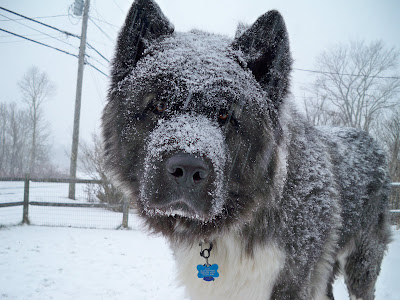Not just kids sledding, families playing, and dogs running; it's the combination of them all together that warms my heart.
Some time in recent years there became these things called "dog parks" - not so much because people loved dogs, saw how much their presence benefits families and communities, and cared what's best for them and their owners, but rather because there was an increasing fracture between dog-owning families and non-dog-owners. Whereas most every park used to be dog-friendly, now it's the exception rather than the rule; so dog-owners had no choice but to fight for open communal space that we're still welcome in.
 |
| Racey the Lurcher |
And the closing of Dana Park to dogs had a ripple effect. Dog-owners were forced to converge instead on Fort Washington, a great historic fort and dog park a bit closer to the river. Not a big deal in itself, at least for committed dog walkers like me willing to tromp an extra mile for the well-being of our canines. But the new onslaught of dogs at Fort Washington caused defenders of the historic nature of the fort to start a petition of their own. And so the battle continues, with dog-owners and dogs losing more and more of their rights and privileges.
And the problem doesn't stay contained in the frustration of the dog-owners. Because every dog that isn't well-exercised is certain to exhibit more and more behavior problems, which will cause other problems of their own - as well as engendering only more anti-dog sentiment. And so the cycle will continue.
And of course the problem isn't restricted to Beantown. Here in Park Slope I've watched Prospect Park cut the number of offleash dog-hours drastically, in the past five years, as well as the number of locations in the park that dogs can run offleash during those limited hours.
All of which should give some clue why I'm so happy to see families, kids, and dogs playing together in the same park. Hillside Park is a wonderful dog park in Dumbo, Brooklyn, but it shouldn't just be called a dog park. It's a park, after all! Only one of the few remaining that is dog-friendly 'round the clock. No dog owners ever get upset at families or children coming and playing or saying hi to the pups. Let's take a lesson from them.
Can't we all just get along?

 Fashionable no? I know she got stepped on recently and yelped but I thought it was her paw. (being food motivated she is sometimes underfoot in the kitchen while dinner is cooking) Maybe it was her tail instead or maybe I missed something while I was at work and she was home with the family. She does play rough with Jack sometimes too.
Fashionable no? I know she got stepped on recently and yelped but I thought it was her paw. (being food motivated she is sometimes underfoot in the kitchen while dinner is cooking) Maybe it was her tail instead or maybe I missed something while I was at work and she was home with the family. She does play rough with Jack sometimes too. 








 The yellowish dot on the slide below is what it looks like actual size. They are slightly larger than a flea.
The yellowish dot on the slide below is what it looks like actual size. They are slightly larger than a flea.

 I also get to look at fecal samples but haven't taken a photo of that yet. I'm sure there will be some interesting parasites to show eventually.
I also get to look at fecal samples but haven't taken a photo of that yet. I'm sure there will be some interesting parasites to show eventually. 








